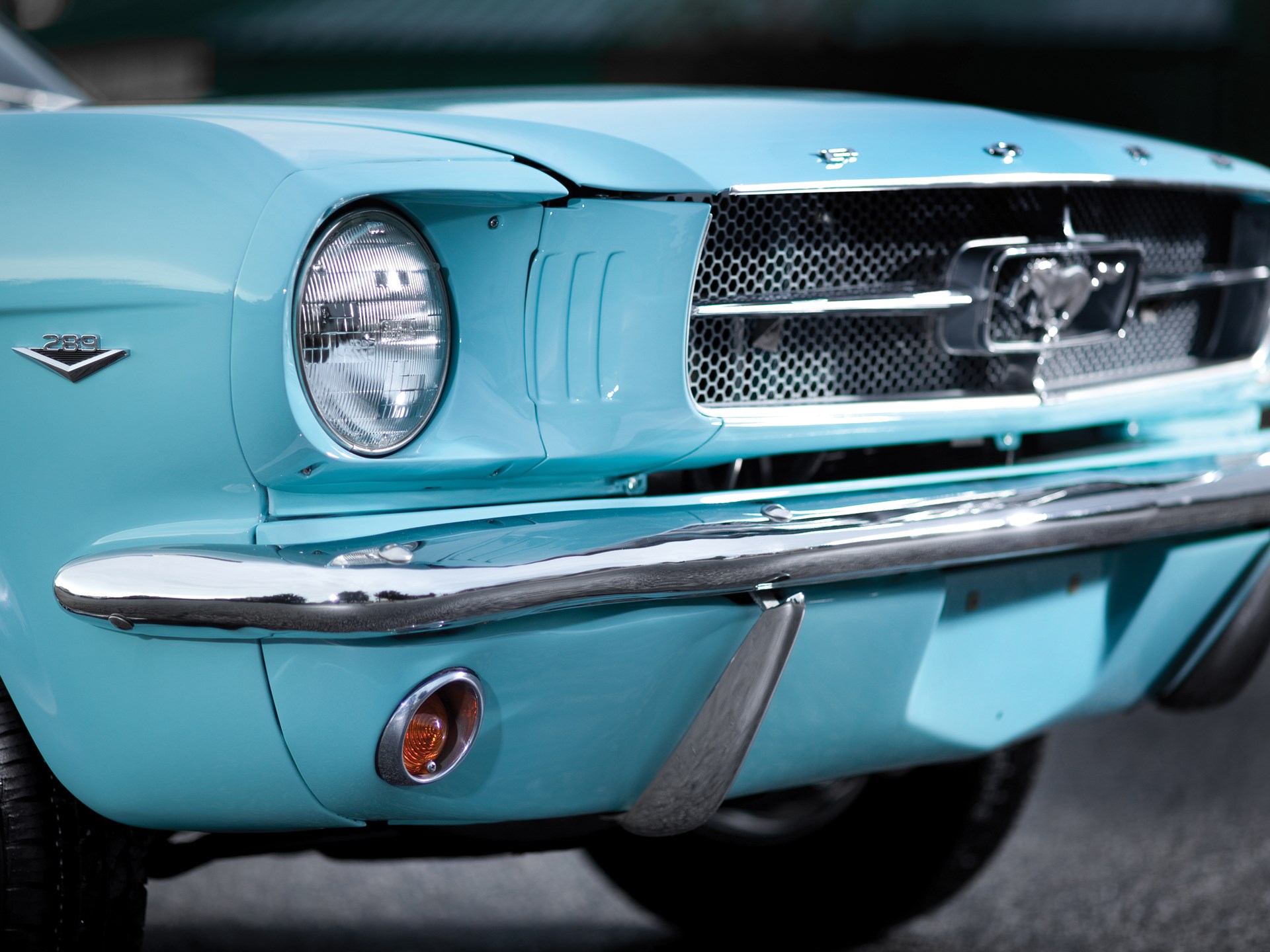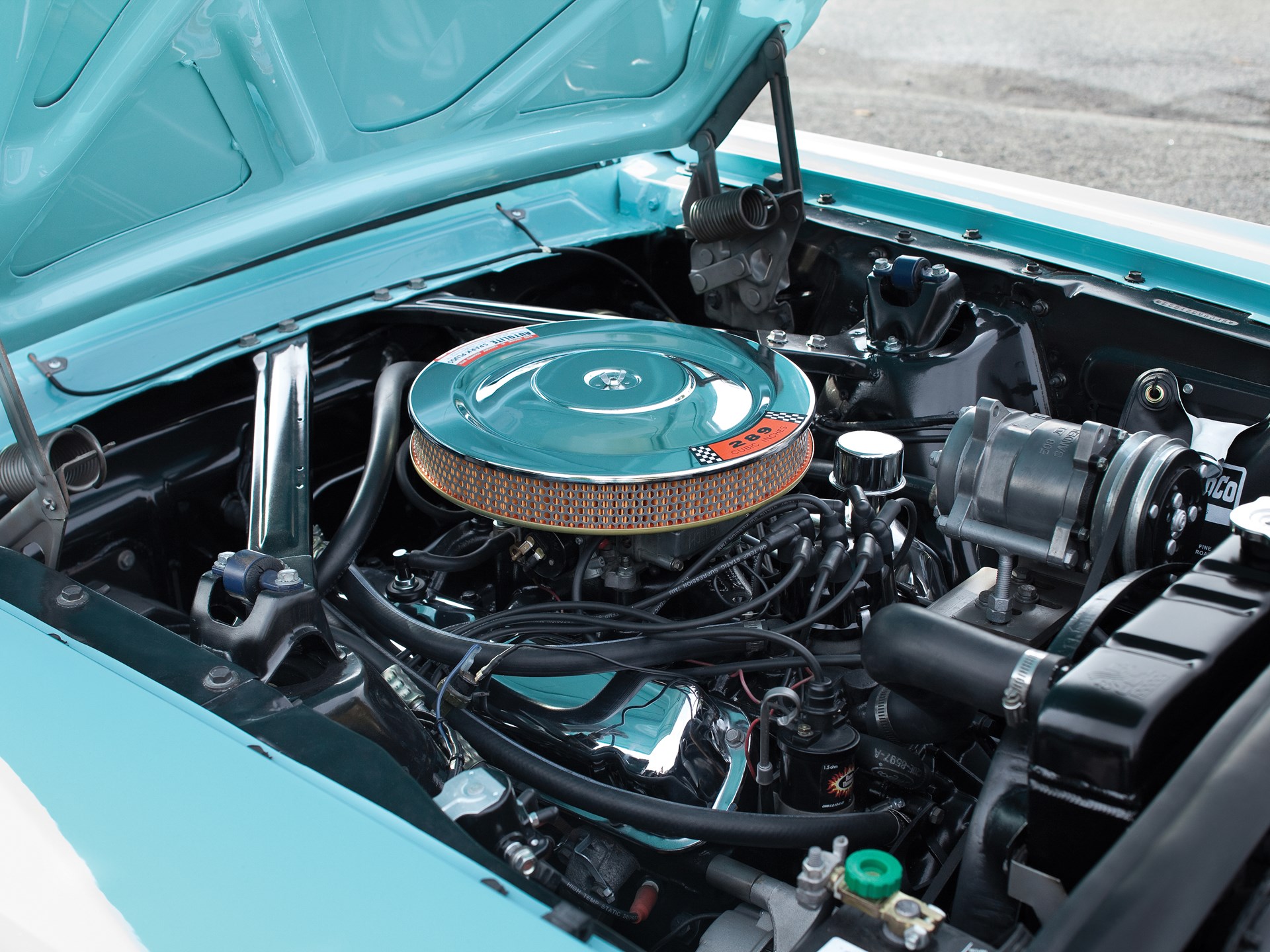The 1965 Ford Mustang is still America’s most popular classic car
For the 2018 model year, Ford touted the Mustang as the “world’s best-selling sports coupe,” with 113,066 new models finding homes. That includes a few thousand right-hand drive ’Stangs in Britain. In fact, according to Ford, the sixth-generation pony car was available in 146 countries in 2018.
Impressive stuff, to be sure, but turn back the clock to 1965, and 113,066 new Mustangs looks underwhelming by comparison. That year—the Mustang’s first—Ford sold around 559,500 examples, and if you count the total extended model year (the Mustang debuted mid-season in April 1964) the number rises to an even-more-impressive 680,989. Do a little napkin math and you’ll see that 1965 outsold 2018 by six to one.
Sure, the new car landscape is entirely different today. And sure, the Chevrolet Camaro and Dodge Challenger weren’t yet around in ’65 to eat away market share. But that contrast really speaks to how big of a splash the first Mustangs made. Measured by insurance quoting activity, the 1965 Mustang is the country’s most popular classic car among Hagerty clients, and that’s just one of many reasons why we named it the greatest car of the ’60s. Few cars stay so relevant after five decades.
Noting that Boomers were fast approaching car-buying age in the early 1960s and that more Americans were getting second cars, the folks at Ford got clever and combined the compact Falcon platform with an exciting long-hood, short-deck body. They then gave it a cool name. And then there was the media blitz. It was so huge that the ’65 Mustang became as much a piece of Americana as automotive history. TV commercials, print articles, and newspaper adverts all surrounded the car’s official debut at the 1964 New York World’s Fair.

20190626134009)
Ford reportedly took 22,000 orders on the first day, and Mustang convertibles appearing on the silver screen in both 1964’s Goldfinger and 1965’s Thunderball only added to the car’s star power, even if they did play second fiddle to James Bond’s DB5. While Mopar fans will gladly tell you that the Plymouth Barracuda beat Ford to market by a few weeks, the Mustang stole the show and gets the credit for inventing the pony car.
Meanwhile, three Ford factories—in San Jose, California; Metuchen, New Jersey; and Dearborn, Michigan—could barely keep up with demand as buyers were frothing at the mouth. Most opted for the notchback coupe that started at $2320, while the convertible came in at $2557, and the fastback that was later added to the lineup went for $2553. Most people couldn’t afford an E-Type Jag or a Corvette, but $2500 (about $20,700 today) was absolutely attainable for many working Americans. And many were more than willing to fork over the money for such a sexy, fun-to-drive, yet practical automobile.
Most buyers (nearly three-quarters) also chose a V-8 engine. The first V-8s were 260 cubic inches and 164 horsepower, but the 289 soon arrived with a two-barrel carb and 200 hp, or a four-barrel in 210-hp, 225-hp, or Hi-Po 271-hp configurations. Other changes over the course of the year included an alternator replacing the generator, more available paint colors, and a few subtle interior upgrades. The variances between earlier and later ’65 Mustangs has led people to differentiate between “1964” or “1964 ½” and ’65 cars, but technically, Ford sold them all as 1965 models.
Ford went on to sell 607,500 more Mustangs in 1966, but by 1967 GM had finally caught up by introducing the Camaro, and Chrysler had improved the Barracuda, so the Mustang no longer had the field all to itself. Today, however, the ’65 Mustang is the quintessential ’60s classic. And given the massive amount of them that Ford churned out, there are always plenty on the market to tempt you.

They don’t appeal exclusively to the Baby Boomers or their parents who bought them new, either. First-generation Mustangs are among the top cars to own across all age groups, and at a year/make/model level, the 1965 Mustang is the top car of them all among Hagerty clients. For reference, the second-most popular is the ’66 Mustang. For older buyers, ’65 Mustangs play to nostalgia, while younger buyers can trace the lineage of the latest and greatest Mustangs back 54 years. That the 1965’s styling has aged incredibly well certainly doesn’t hurt, either. Buyer interest skews slightly younger for the ’65 Mustang than the rest of the market, which is unusual for something from the ’60s.
As for prices, a lot of the heat in the Mustang market lately has been for Fox-body (1979–93) cars, while the best way to describe ’65 prices is “steady.” A lot of muscle car values tanked during the recession, but Mustangs weren’t nearly as volatile as something like a Hemi Cuda. Other than a slight dip in 2009–10, they’ve been generally trending up for the past decade, but it’s mostly small movements rather than big waves.
Over the last five years, base convertible prices are up between 5–7 percent to an average #2 value of $39,460, depending on the engine, while GT convertibles are up 9–15 percent to a #2 value of $44,700 for the 289/225 and $69,900 for the 289/271. Base notchback coupes are up between 2–8 percent (average #2 value of $26,000), while GTs are up 9 percent (#2 value of $37,200 for the 289/225 and $44,000 for the 289/271). Looking at the last three years, things are a little flatter, though, with prices for all of the above down 1–2 percent.

20190626133914)
In part due to the Bullitt effect, fastbacks have appreciated the most, with base ’65 fastbacks up 17 percent over the past five years (to an average #2 value of $38,900) and GT fastbacks up 13–14 percent (to a #2 value of $42,700 for the 289/225 and $62,900 for the 289/271). Over the past year, base fastbacks are up 3–4 percent and GTs are up about 3 percent.
The cheapest V-8 in the Hagerty Price Guide is a 260 coupe, with a #2 value of $23,100, while the most expensive is the GT 289/271 convertible, with a #2 value of $69,900. Add 10 percent for a four-speed; subtract 10 percent for an automatic. The most collectible models are those with the rarest combination of options and with the freshest, most-correct restorations.
Regardless of engine or body type, the 1965 Mustang never goes out of style. If you own one, everyone you’ll meet will want to talk to you about the one they (or their dad, or their cousin, or their sister’s roommate’s friend, etc.) used to own. And you’ll never hear, “Hey, what kind of car is that?”
The classic car market isn’t a popularity contest, but if it was, the ’65 Mustang would be the prom queen.
20190626133926)
20190626133500)
20190626133936)
20190626133947)
20190626134022)
20190626134037)






Of the 607,568 Mustangs sold in the 1966 model year, how many do you suppose are still owned today by the original owner? I know of at least one; mine! I was single and this Mustang was my 26th birthday present to myself. If you do the math, you can see that I am now 82 YO. The car is a Nightmist blue hardtop with a 289 V/8 and a 3 speed manual transmission. I took delivery of it on May 27, 1966 from Market Ford Sales in Minneapolis MN. Always garaged and well cared for, the car now has about 140,000 miles on it and is still in nice original condition. I have it insured with Hagerty.